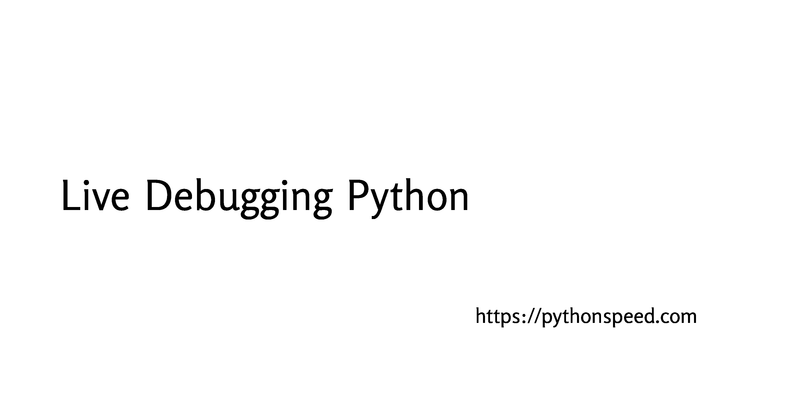As man-made intelligence (AI) jobs develop complexity and even scale, one involving the challenges developers face is arranging their codebase in a way that supports scalability, collaboration, and maintainability. Python, being the first choice language for AJAI and machine mastering projects, requires careful directory and file structure organization to ensure the development procedure remains efficient plus manageable over time. Poorly organized codebases can result throughout difficult-to-trace bugs, gradual development, and challenges when onboarding brand-new associates.
In this specific article, we’ll dance into Python listing best practices especially for scalable AI code generation, centering on structuring jobs, managing dependencies, handling data, and employing version control. Using these best methods, AI developers can build clean, scalable, and maintainable codebases.
1. Structuring the Directory for Scalability
The directory structure of your AI task sets the basis for the complete development process. The well-structured directory makes it easier to be able to navigate through files, find specific elements, and manage dependencies, specially when the project grows in dimensions and complexity.
Fundamental Directory Design
Below is a common and effective directory layout for scalable AI code technology:
arduino
Copy signal
project-root/
│
├── data/
│ ├── raw/
│ ├── processed/
│ ├── external/
│ └── README. md
│
├── src/
│ ├── models/
│ ├── preprocessing/
│ ├── evaluation/
│ ├── utils/
│ └── __init__. py
│
├── notebooks/
│ ├── exploratory_analysis. ipynb
│ └── model_training. ipynb
│
├── tests/
│ └── test_models. py
│
├── configs/
│ └── config. yaml
│
├── scripts/
│ └── train_model. py
│
├── requirements. txt
├── README. md
├──. gitignore
└── setup. py
Break down:
data/: This file is dedicated to datasets, with subdirectories for raw information (raw/), processed info (processed/), and outside data sources (external/). Always include a README. md to describe typically the dataset and utilization.
src/: The key signal folder, containing subfolders for specific responsibilities:
models/: Holds machine learning or full learning models.
preprocessing/: Contains scripts and modules for files preprocessing (cleaning, function extraction, etc. ).
evaluation/: Scripts regarding evaluating model efficiency.
utils/: Utility attributes that support typically the entire project (logging, file operations, etc. ).
notebooks/: Jupyter notebooks for educational data analysis (EDA), model experimentation, and documentation of work flow.
tests/: Contains unit and integration tests to ensure program code quality and effectiveness.
configs/: Configuration documents (e. g., YAML, JSON) that hold hyperparameters, paths, or even environment variables.
scripts/: Automation or one-off scripts (e. h., model training scripts).
requirements. txt: Listing of project dependencies.
README. md: Important documentation providing a summary of the task, tips on how to set up the environment, in addition to instructions for working the code.
. gitignore: Specifies files in addition to directories to banish from version control, such as huge datasets or delicate information.
setup. py: For packaging and even distributing the codebase.
2. Modularization of Code
When working on AI tasks, it’s critical to break down the functionality into recylable modules. Modularization allows keep the computer code clean, facilitates signal reuse, and allows different parts regarding the project to be developed and tested independently.
Example of this:
python
Copy signal
# src/models/model. py
import torch. nn as nn
category MyModel(nn. Module):
outl __init__(self, input_size, output_size):
super(MyModel, self). __init__()
self. fc = nn. Linear(input_size, output_size)
def forward(self, x):
return self. fc(x)
In this example, the model architecture is contained inside a dedicated module in the models/ directory, making that easier to maintain plus test. Similarly, additional parts of the particular project like preprocessing, feature engineering, plus evaluation should have their own dedicated modules.
Using __init__. py for Subpackage Management
Each subdirectory should contain a great __init__. py document, even if it’s empty. This record tells Python that will the directory ought to be treated as being a package, allowing typically the code to get imported more effortlessly across different themes:
python
Copy computer code
# src/__init__. py
from. models import MyModel
3. Handling Dependencies
Dependency supervision is crucial regarding AI projects, as they often involve various libraries and frames. To avoid reliance conflicts, especially when collaborating with clubs or deploying code to production, it’s best to control dependencies using resources like virtual environments, conda, or Docker.
Best Practices:
Virtual Environments: Always produce a virtual environment for the job to isolate dependencies:
bash
Copy computer code
python -m venv
source venv/bin/activate
pip install -r needs. txt
Docker: Regarding larger projects that need specific system dependencies (e. g., CUDA for GPU processing), consider using Docker to containerize the application:
Dockerfile
Copy code
FROM python: 3. 9
WORKDIR /app
COPY. /app
RUN pip mount -r requirements. txt
CMD [„python“, „scripts/train_model. py“]
Reliance Locking: Use resources like pip freeze > requirements. txt or Pipenv to secure typically the exact versions of the dependencies.
4. Variation Control
Version control is essential with regard to tracking changes in AI projects, guaranteeing reproducibility, and facilitating collaboration. Follow these types of best practices:
Branching Strategy: Use a Git branching design, like Git Flow, where main branch holds stable program code, while dev or even feature branches are used for advancement and experimentation.
Labeling Releases: Tag considerable versions or milestones in the job:
gathering
Copy code
git tag -a v1. 0. 0 -m „First release“
git push source v1. 0. 0
Commit Message Suggestions: Use clear in addition to concise commit communications. Such as:
sql
Copy program code
git dedicate -m „Added info augmentation to the particular preprocessing pipeline“
. gitignore: Properly configure your. gitignore file to be able to exclude unnecessary data such as significant datasets, model checkpoints, and environment data. Here’s a normal example:
bash
Copy code
/data/raw/
/venv/
*. pyc
__pycache__/
5. Data Supervision
Handling datasets inside an AI task can be tough, especially when dealing with large datasets. Organize your computer data directory site (data/) in a way that will keep raw, processed, and external datasets distinct.
Raw Data: Maintain unaltered, original datasets in a data/raw/ directory to guarantee that you can certainly always trace back in the original files source.
Processed Information: Store cleaned or even preprocessed data in data/processed/. Document the preprocessing stages in the particular codebase or in a README. md file inside the folder.
External Data: When tugging datasets from exterior sources, keep them in a data/external/ directory to distinguish involving internal and outside resources.
Data Versioning: Use data versioning tools like DVC (Data Version Control) to changes inside datasets. This is particularly useful when tinkering with distinct versions of training info.
6. Testing and Automation
Testing is usually an often-overlooked section of AI projects, however it is crucial for scalability. As projects develop, untested code can result in unexpected bugs and even behavior, especially any time collaborating with a new team.
Unit Testing: Write unit testing intended for individual modules (e. g., model structure, preprocessing functions). Use pytest or unittest:
python
Copy signal
# tests/test_models. py
import pytest
through src. models transfer MyModel
def test_model_initialization():
model = MyModel(10, 1)
assert design. fc. in_features == 10
Continuous The usage (CI): Set upwards CI pipelines (e. g., using GitHub Actions or Travis CI) to instantly run tests any time new code is committed or combined.
7. Documentation
Clean and comprehensive documentation is essential for virtually any scalable AI project. It helps note of new developers in addition to ensures smooth collaboration.
README. md: Provide an overview of typically the project, installation recommendations, and examples of just how to run typically the code.
Docstrings: Contain docstrings in capabilities and classes to clarify their purpose and even usage.
Documentation Resources: For larger jobs, consider using documents tools like Sphinx to create professional documents from docstrings.
Realization
Scaling an AI project with Python requires careful preparing, a well-thought-out directory site structure, modularized program code, and effective addiction and data administration. Through click to investigate outlined inside this article, programmers can ensure their AJE code generation jobs remain maintainable, worldwide, and collaborative, actually as they develop in size plus complexity
